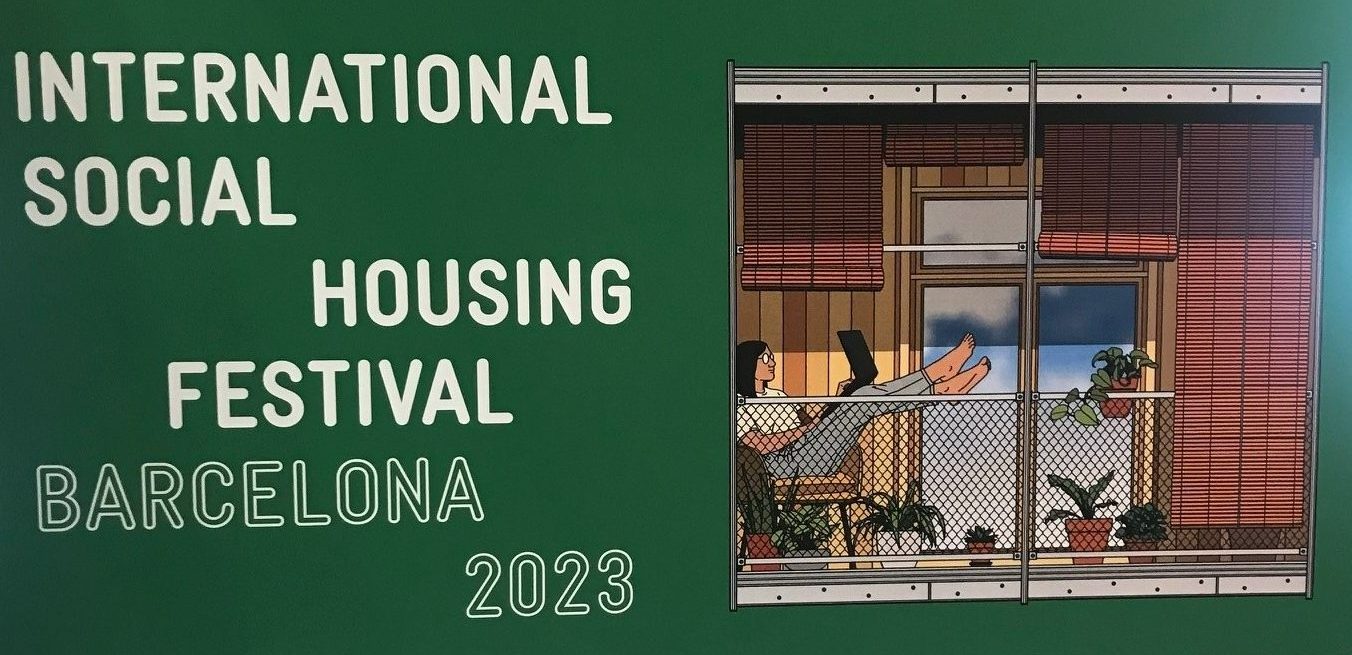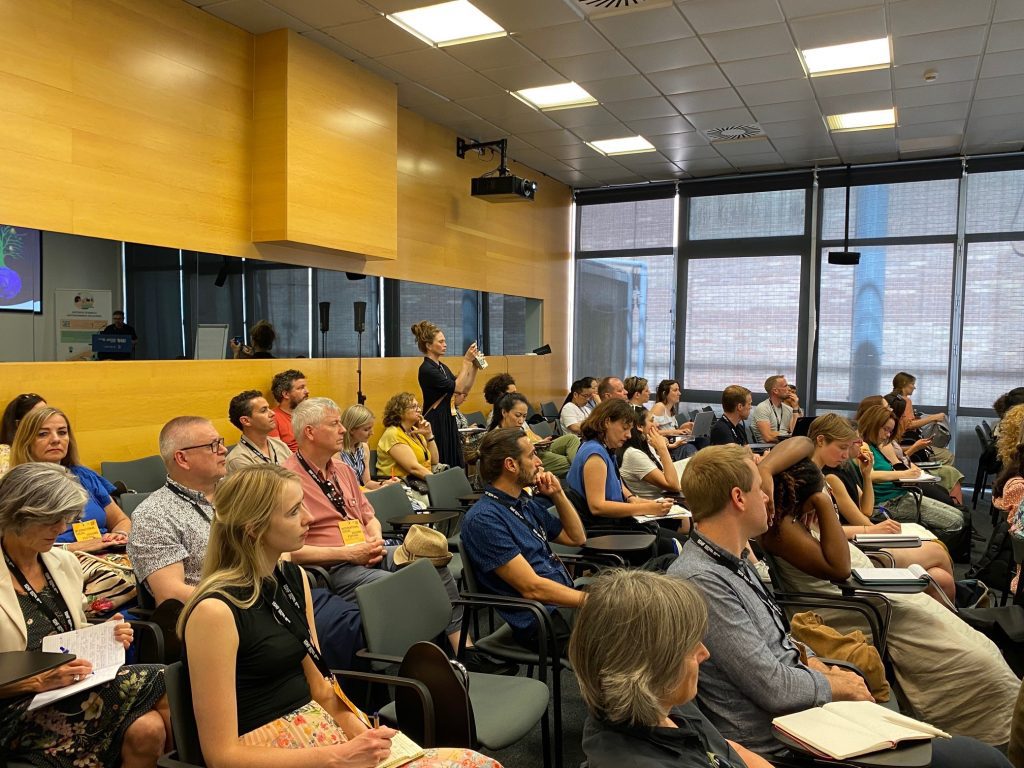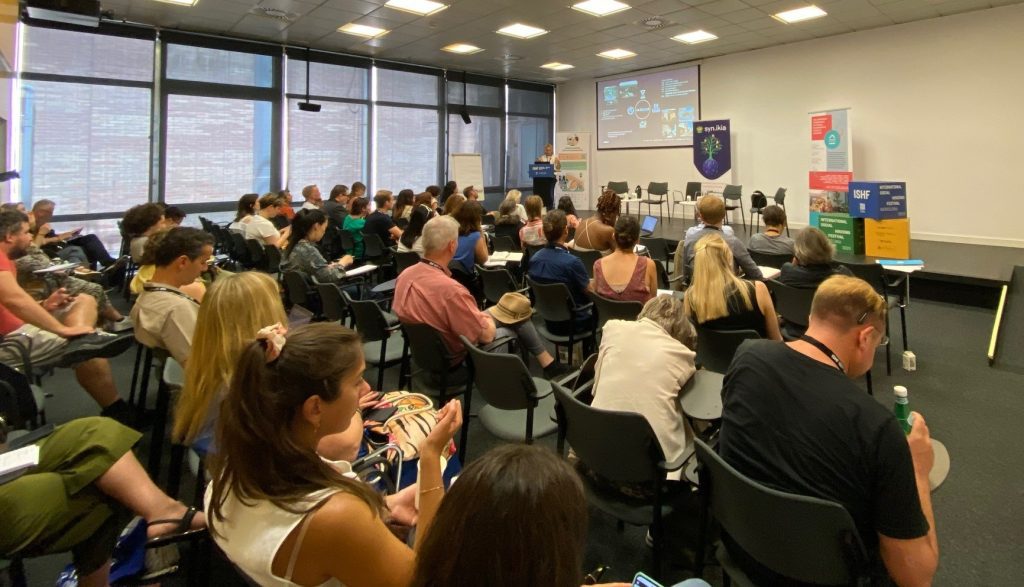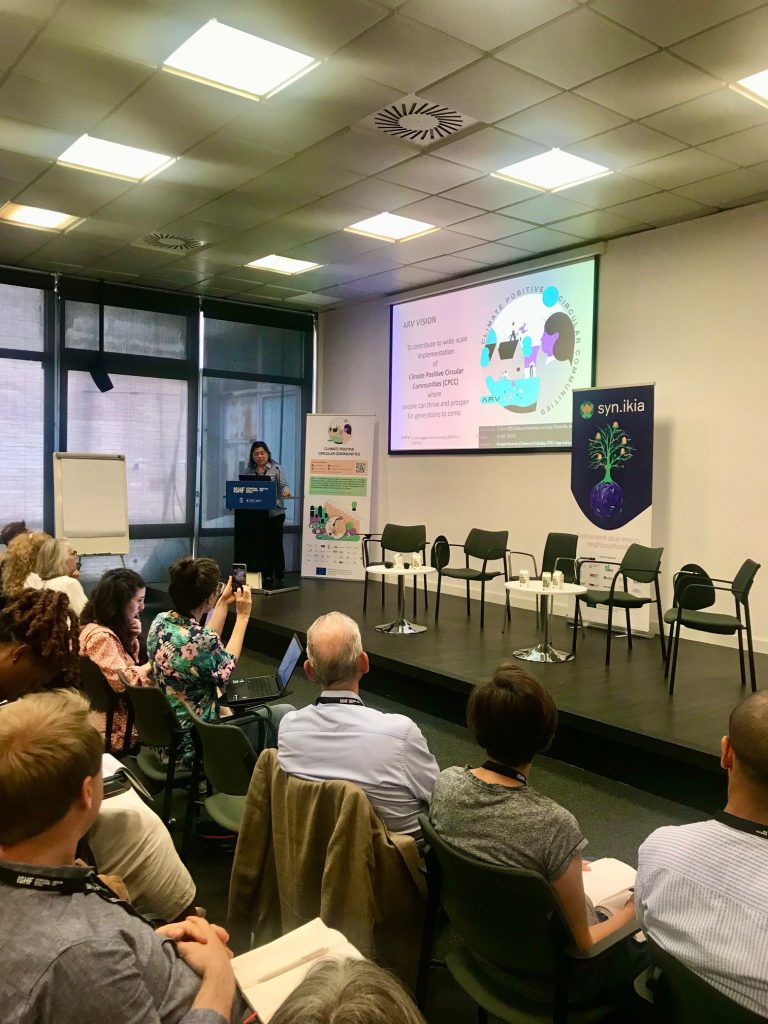
Involving residents in renovation and energy efficient social housing projects can be challenging. Lack of motivation, a general distrust towards institutions and miscommunication are issues that may arise when working with resident engagement. How do we meet these challenges, ensuring that people’s needs are met when developing Climate Positive Circular Communities (CPCCs)?
Exploring challenges and tools related to resident engagement was the main topic when ARV and the syn.ikia-project joined forces in a workshop during this year’s International Social Housing Festival in Barcelona (ISHF 2023). The event took place on June 8th 2023 and was organized by ARV’s coordinating institution the Norwegian University of Science and Technology (NTNU) together with Housing Europe and INCASÒL. The aim was to facilitate the exchange of knowledge around resident engagement in energy efficient social housing projects. Clara Mafé from Housing Europe, who leads the work on stakeholder engagement in syn.ikia, moderated the event.
The festival addressed challenges in mature and emerging housing systems in the Mediterranean region. Our workshop introduced several social housing projects involving resident engagement and focused especially on syn.ikia and ARV’s demonstration projects in Spain. The 43 participants were also given a brief look into ARV’s methodology for planning citizen engagement activities.
“Active resident engagement and feedback are often the weakest links in processes of sustainable neighbourhood developement” – Caroline Cheng
Caroline Cheng (SINTEF Community) leads the work on citizen engagement and Living Labs in ARV. She briefly introduced the ARV project before presenting ARV’s SMILE methodology: Scope, Map, Implement, Learn, Enhance. The methodology involves analyzing the key actors involved in order to target specific needs. She emphasized that with a better understanding of our target groups, we can better messages from the tenant’s perspective. The language we use to communicate is key.
Carles Mas (INCASÒL) presented the syn.ikia-project, followed by the social management process in syn.ikia’s demo in Santa Coloma de Gramenet that will be finished next year. This includes setting up an office on-site where tenants can report and discuss issues that are important for them. He emphasized the importance of cultivating trust between tenants and the project administration.
Marta Nicolau Prohens (City of Palma) presented ARV’s demo in the Llevante District in Palma. She introduced strategies for creating an inclusive energy transition process and carrying out large-scale retrofitting. According to her experience, a successful engagement strategy should increase comfort and security amongst residents, as well the energy efficiency of the neighbourhood. She highlighted that given how people is unpredictable, you never know what the outcome of engagement activities will be. It is important to be adaptable and rethink plans along the way.
Anna Mestre (Catalan Housing Agency) has worked with resident engagement in the three retrofitting projects HOUSEFUL, 4RinEU and Plug-n-Harvest. She talked about planning engagement activities and the various participation tools they used in each of the three projects. These included group discussions and one-on-one conversations with tenants and focus groups to detect incentives.
The presentations was followed by group discussions around which target groups are more or less difficult to engage and why, incentives that can be used for motivation and participation tools.
Key takeaways from the discussion:






Want to know more about the new generation of climate positive circular communities (CPCC)? Sign up to our bi-annual newsletter (no spam guaranteed)!
This project has received funding from the European Union's Horizon 2020 research and innovation programme under grant agreement no. 101036723
Want to know more about the new generation of climate positive circular communities (CPCC)? Sign up to our bi-annual newsletter (no spam guaranteed)!
Want to know more about the new generation of climate positive circular communities (CPCC)? Sign up to our bi-annual newsletter (no spam guaranteed)!

This project has received funding from the European Union's Horizon 2020 research and innovation programme under grant agreement no. 101036723

This project has received funding from the European Union’s Horizon 2020 research and innovation programme under grant agreement no. 101036723

Subscribe to our Newsletter
Want to know more about the new generation of climate positive circular communities (CPCC)? Sign up to our bi-annual newsletter (no spam guaranteed)!